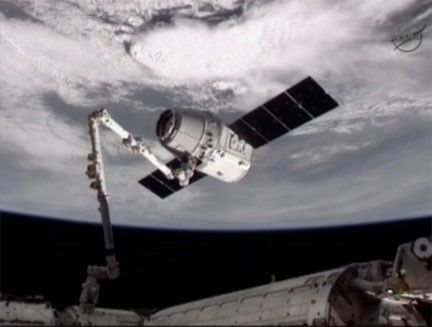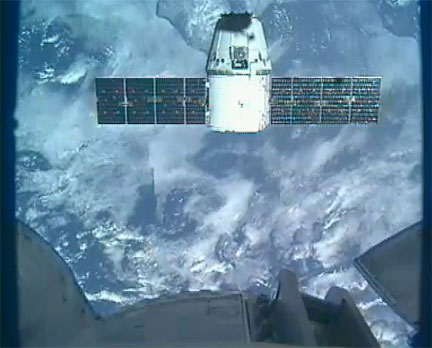In a symbolic and historic “handshake”, the astronauts inside the International Space Station reached out with their robotic arm and grabbed the Dragon by the tail. On Friday the first private spacecraft docked with the remote outpost orbiting 200 miles above our heads.
It was more than just supplies the Dragon delivered, but the promise of a carrying crewmembers. Since the retirement of the Space Shuttle, the only other way to orbit is aboard a Russian Soyuz spacecraft
This adventurous and historical feat may create a powerful alliance that re-enables NASA to put more focus on the science of space travel and sending humans to Mars. In addition, the prospects for free enterprise in space are boundless.
Congratulations to Elon Musk and everyone at SpaceX, NASA and the astronauts aboard ISS. This is a great day for people on Earth and another step into a new frontier for all humanity. The civilization we ultimately create in space and the worlds we will visit may well be beyond our wildest imagination.

SpaceX Dragon docks with the International Space Station — the first private spacecraft ever to do so. (Credit: NASA)


This is a giant leap for mankind.
Live video from the International Space Station includes internal views when the crew is on-duty and Earth views at other times. The video is accompanied by audio of conversations between the crew and Mission Control.
This video is only available when the space station is in contact with the ground. During “loss of signal” periods, viewers may see a test pattern or a graphical world map that depicts the station’s location in orbit above the Earth.
Since the station orbits the Earth once every 90 minutes, it experiences a sunrise or a sunset about every 45 minutes. When the station is in darkness, external camera video may appear black, but can sometimes provide spectacular views of lightning or city lights below.
See: http://www.ustream.tv/channel/live-iss-stream